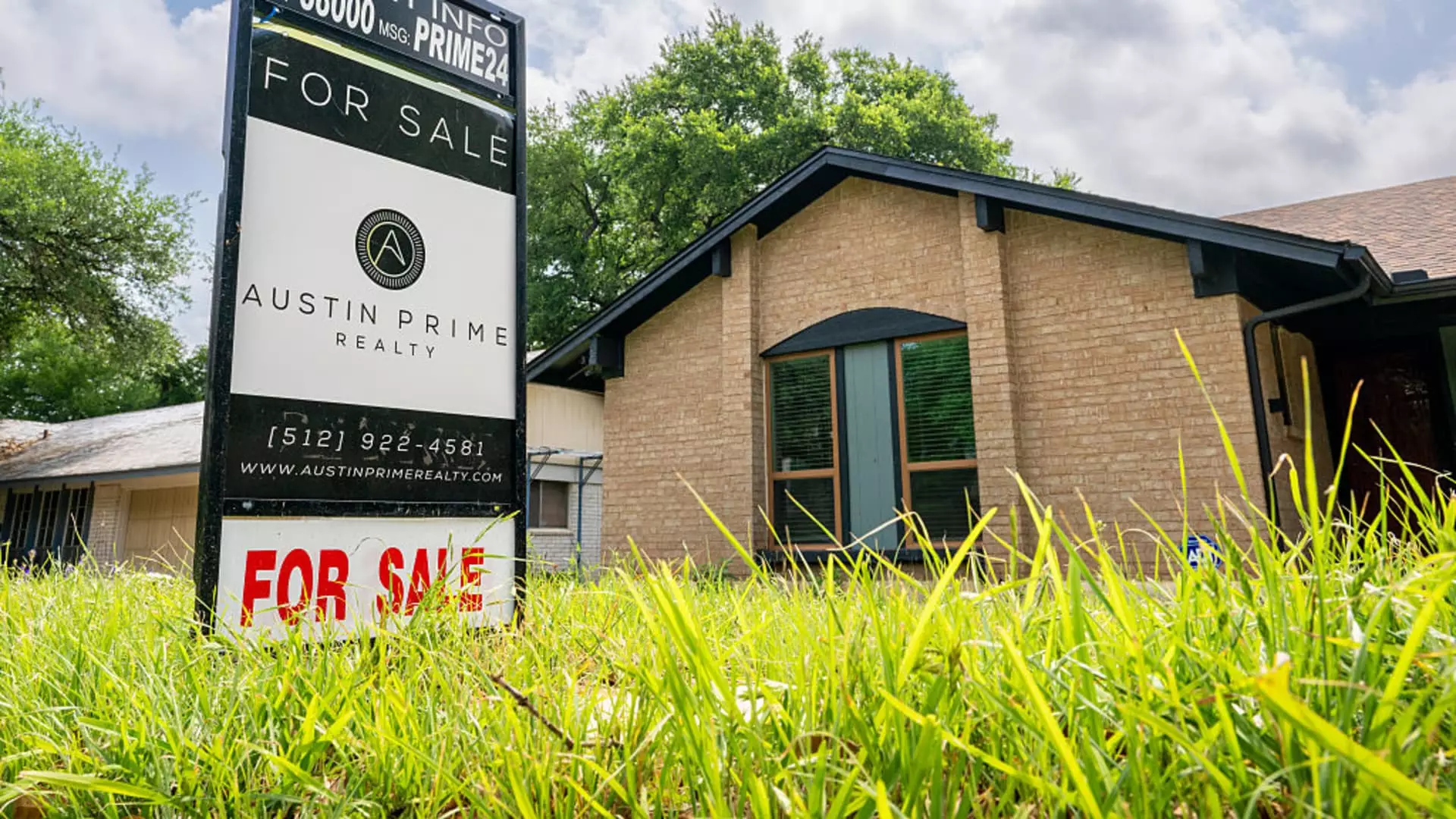In a market that is continually dictated by federal policies and economic indicators, the recent stability in mortgage interest rates could be interpreted as a sign of resilience—or a frustrating stagnation. Last week, the Mortgage Bankers Association reported a modest increase in mortgage application volumes by 12.5%. Sure, any uptick in activity can be deemed encouraging, but let’s not overlook that the historical context shows this figure remains disappointing at best. The mortgage landscape is often characterized by soaring aspirations juxtaposed against the harsh realities of borrowing costs, and right now, those costs are inching back up toward a troubling threshold.
The average rate for a 30-year fixed mortgage floated around 6.93% last week, echoing the creeping anxiety that most potential homebuyers feel. This is a mere tick above previous weeks, and significantly, only about 9 basis points lower than last year. Such marginal movements may leave many asking: Is this a glimmer of hope, or merely a deceptive facade masking deeper economic malaise?
The Pent-Up Demand Dilemma
Interestingly, the data showed a marked increase in demand for both home purchases and refinances, with an impressive 16% jump in refinance applications. This surge might suggest that many people are trying to save themselves from the clutches of higher payments, perhaps spurred by the recent loosening of housing inventory, which has increased by 31% compared to last year. This phenomenon invites a deeper analysis: Are we witnessing a fleeting rush, or is it indicative of a transformative shift in buyer sentiment?
It cannot be ignored that this uptick comes against a backdrop of economic uncertainty. Trade talks with China and looming inflation reports could disrupt this fragile equilibrium. While borrowers may currently have more options, the wider implications against a volatile economy raise critical questions for future stability.
The Illusion of a Buyer’s Market
Despite a slight decline in some loan categories, buyers are showing signs of life in the face of stagnant interest rates and a fluctuating economic landscape. The loosening of available listings might suggest a buyer’s market; however, one must tread lightly here. The perception of opportunity can be deceiving, particularly for first-time buyers who might still find their ideal home out of reach due to price increases. It’s imperative to understand that while the prospect of homeownership might seem more accessible, it is still fraught with challenges that could discourage even the most determined.
The speaker from MBA noted a burgeoning interest in real estate among homebuyers, yet one has to wonder: At what cost? The dream of owning a home appears to be juxtaposed against the ever-looming specter of economic fragility, raising existential doubts about long-term investments in property amid uncertainty.
The Path Forward
As the economic narrative unfolds, more than mere statistics are at stake. We must critically interrogate what these figures reveal about broader societal trends and the shaping of policy. If we continue to prioritize short-term gains over sustainable, equitable growth, those alluring application numbers may turn out to be mere blips in a surprising journey of fluctuating aspirations. In this complex confluence of economic signals, one thing is for sure: navigating the path of home ownership will require not just financial resources but a robust understanding of what it truly means to invest in our collective future.

